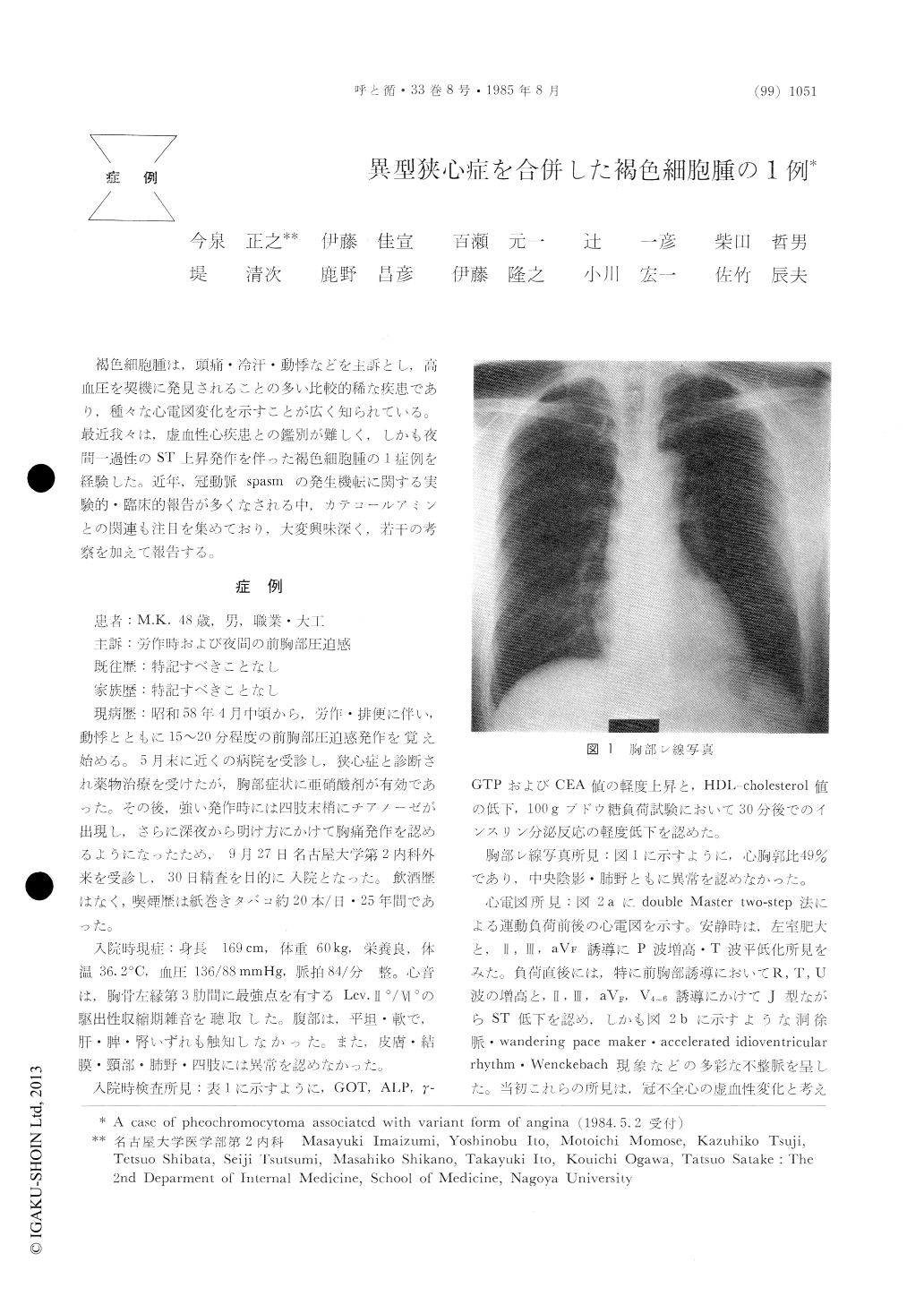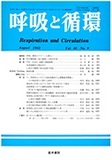Japanese
English
- 有料閲覧
- Abstract 文献概要
- 1ページ目 Look Inside
褐色細胞腫は,頭痛・冷汗・動悸などを主訴とし,高血圧を契機に発見されることの多い比較的稀な疾患であり,種々な心電図変化を示すことが広く知られている。最近我々は,虚血性心疾患との鑑別が難しく,しかも夜間一過性のST上昇発作を伴った褐色細胞腫の1症例を経験した。近年,冠動脈spasmの発生機転に関する実験的・臨床的報告が多くなされる中,カテコールアミンとの関連も注目を集めており,大変興味深く,若干の考察を加えて報告する。
A 48-year-old man with exertional and nocturnal chest oppression was admitted to our hospital on September 30, 1983. Blood pressure was 136/88 mmHg, pulse rate was 84 /min and regular on admission. Chest X-ray film was normal. ECG at rest showed left ventricular hypertrophy and tall Pwaves in leads II, III and aVF. ECG after Master two-step test demonstrated marked ST segment depression in leads II, III, aVF and V4~6 Simul-taneously, various arrhythmias, such as sinus brady-cardia, wandering pacemaker, accelerated idioven-tricular rhythm, and Wenckebach like blocks were observed. Ambulatory ECG (CM-5 lead) revealed transient ST segment elevations with chest oppres-sion at 2 : 04 A.M., 5 : 01 A.M. respectively.
These findings suggested a diagnosis of ischemicheart disease. But coronary angiography was normal and endocrinological examination revealed high concentrations of plasma and urinary epinephrine (0.55ng ml, 1420μg/day. respectively (. Rt-adrenal pheochromocytoma (6×6×5cm) was detected by an abdominal C.T. scan, and 1 weeks later an operation was performed safely. It was considered that epinephrine discharged from the tumor induced a variant form of angina by the stimulation of α-receptors in coronary arteries.

Copyright © 1985, Igaku-Shoin Ltd. All rights reserved.


